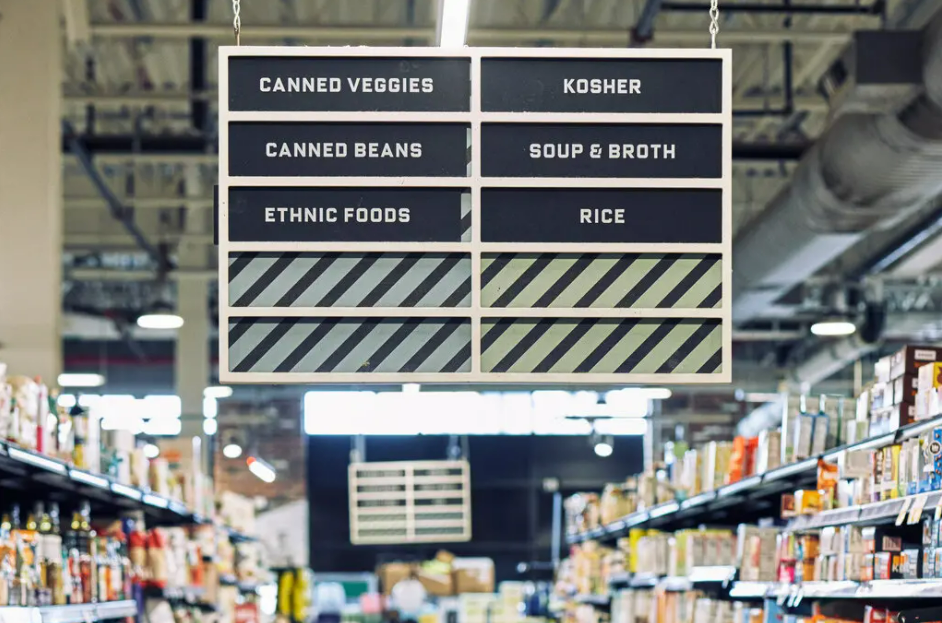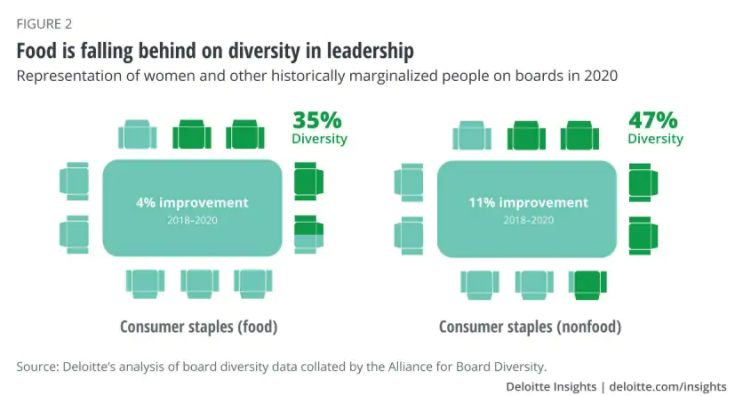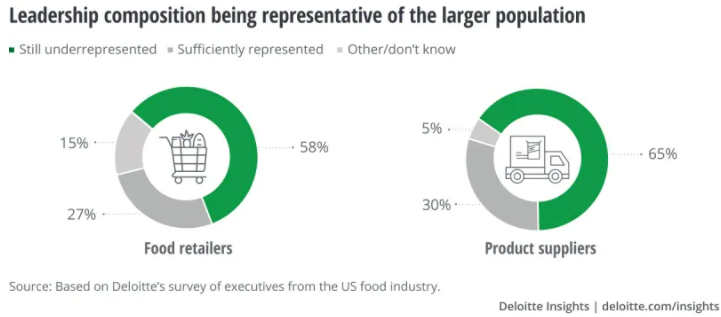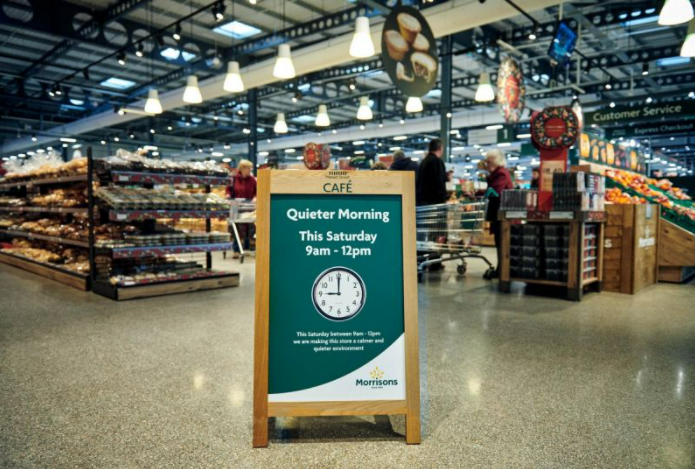Diversity in Grocery: 4 Trends to Watch for (and How to Get Ahead)
Diversity, inclusivity, and equity. These aren’t buzzwords. Nor are they topics of discussion reserved for certain months—or worse, when something negative happens to marginalized groups.
It’s a daily reality for millions of people and should be treated as such by the companies that sell to and employ them.
This includes the heart of every community—grocery stores.
What are you doing to make your supermarket diverse and inclusive for customers and employees?
If you’re still putting together a DEI strategy, this guide will help. Let’s review four recent trends that are transforming diversity in grocery and what you can do to get ahead.
1. Younger generations are leaving non-inclusive businesses
The desire to buy from diverse and inclusive brands is growing, particularly among Gen Z. To them, it’s not enough to just “say” you’re pro-diversity—they want to see it in action. Those that don’t risk losing customers to competitors that do.
For example, roughly 75% of Generation Z consumers say they’ll end relationships with companies with ads that are macho, racist, or homophobic.
However, it’s not just Gen Z to worry about. The American population is more diverse than ever.

Source
This means more of your customers stem from different cultures and backgrounds—even more reason to take diversity and inclusion seriously.
The takeaway: Be diverse and inclusive in everything you do
Don’t just talk about DEI—follow through with your plans and make it known. Hire a mixed workforce, create shoplifting policies that don’t racially profile, add ethnic brands to your shelves, and include different cultures and lifestyles in your advertisements.
Or better yet, do what Southeastern Grocers did and sponsor an event centered around diversity. In this case, it was the Dr. Martin Luther King Jr. Memorial Foundation Holiday Grand Parade in Jacksonville, FL.
“At Southeastern Grocers, we celebrate our diverse associates, customers and communities and cultivate an environment that champions inclusion and belonging within our company and the unique neighborhoods we serve.” — Anthony Hucker, President and CEO of Southeastern Grocers.
It also started a grant program, which so far funded $385,000 to 33 nonprofit organizations focusing on racial disparities in health care, education, and food insecurity.
“Our expanded commitment to advocate for positive change will position us to elevate more deserving, like-minded organizations and support their efforts to create a more equitable society that reflects the ideals Dr. King envisioned nearly 60 years ago.” — Anthony Hucker
2. Ethnic grocery products are in high demand
General grocery stores are designed to cater to the masses. However, that’ll only take you so far, especially as America diversifies.
Because of this, we’re seeing an influx of ethnic retailers appearing across the country. There’s increased interest among Latin American companies to open up shop in the USA.
However, it’s not just interest on the business side—consumers are looking for diverse products as well. This is causing mainstream grocery chains to expand into ethnic product lines to cater to these groups.
Not a bad idea, especially with the ethnic food market expected to hit $98 billion by 2028.
It’s been an untapped market for far too long, but not just for the Hispanic market. We see online Asian grocery is now a thing and it’s generating $9 billion.
The Takeaway: Add ethnic products to your aisles (but avoid this mistake)
Consumers want foods that reflect their culture, so grocers need to provide it or they’ll shop elsewhere. It’s a common-sense move many grocery stores already made. Yet, many are doing it all wrong: They’re adding all the ethnic products to one aisle and calling it the “ethnic foods” aisle.

Source
Not only is this a severely outdated concept (introduced during World War II) it presents several problems. For instance, it:
- Segregates the store (making it feel less inclusive)
- Diminishes the odds of general shoppers finding ethnic brands (hurting sales and brand visibility)
- Limits the number of items available (since it’s jumbled into a single aisle)
- Jams multiple cultures into a one aisle (reducing diversity and inclusion)
- Makes it inconvenient and confusing to find products (i.e., the spices should be in the spice aisle)
So instead, grocers should add ethnic products to each aisle in their respective locations. It provides greater visibility for brands, improves the shopping experience for ethnic customers, and increases the odds of ethnic food items becoming mainstream.
According to Irit Fridlis, VP of Strategy at stor.ai, concentrating ethnic products in the aisle helps customers’ orientation and increases basket sizes.
“Arrange the shelves, so related products are close together. This makes shopping easier and will also increase the average order size. How? Build statistical models using insights showing items frequently purchased together.” — Irit Fridris
You can also use stor.ai to promote relevant products to your customers that like to shop online. The grocery e-commerce platform uses AI to learn the customers’ preferences and make recommendations based on past searches and purchases.
3. Employees of color demand opportunities (all the way to the top)
Hiring people that look like those in surrounding communities is business 101. Yet, it’s still not enough. Filling your cash registers, bakery, and stocking room with people of various cultures is a start.
However, it’s treated as the be-all, end-all by grocers. The lack of advancement opportunities is thin, and it shows: The food and grocery industry is falling behind on diversity in leadership.

Source
There’s also a significant diversity gap within management, C-suite, and director-level positions.

Source
When asked about the priorities of their senior leadership team, around 86% of grocery and food retailers stated they want to make significant progress on their DEI goals.
So far, diversity in director-level roles only grew by 4% (to 35%) in 2020. It’s a work-in-progress, especially when paired against companies in nonfood consumer staples.
At stor.ai, we take pride in being a diver and inclusive workplace. In fact, 37% of our employees are women, including two leadership roles—VP of Strategy and VP of Sales and Marketing.
The Takeaway: Hire diverse, develop training programs, and hire from within
Offering opportunities to advance is appealing to today’s workers. So not only does this address the lack of diversity in leadership, it can also attract and retain in-store talent. This is critical since many grocers are dealing with a major labor shortage.
A training program is critical to help your workers move up the ladder and attain bigger, higher-paying roles. It’s also essential to train management on anti-racism and unconscious biases, so it’s a cross-organizational effort.
This shouldn’t be a one-time training—make it a multi-year plan with various touchpoints to embed their teachings into everyday work-life. It’s also good to have a zero-tolerance policy for racist behaviors and harassment to weed out those who don’t play ball.
4. Disabled and elderly need more than just accessibility
Make no mistake—creating an “accessible” store isn’t the same as making it inclusive. Sure, designing your storefront and aisles to be accessible for wheelchairs is a great start, but is that all you can do?
There are various types of disabilities outside of mobility issues that need addressing. For instance, those with visual impairments or behavioral disabilities. The latter is gaining steam and even has a new term coined just for it: neurodiversity.
This represents individuals with varying behavioral disorders, like those with sensitivity to loud noises and bright lights. Supermarket environments are normally both, which makes it challenging for parents to shop with neurodiverse children.
What about the visually and hearing impaired? Irit suggests two options:
- Install a “RightHear” system to provide vocal guidance and orientation for the blind and hard-of-seeing.
- Add “hearing loops” throughout your store to filter background noise to allow hearing-impaired customers to hear and understand service providers (works with T-coil hearing aids).
The takeaway: Don’t just design for accessibility, create an experience
It’s impossible to create an environment that caters to every type of disability and handicap. However, you can learn your shoppers and their needs and make adjustments to stores individually.
Conduct surveys to see what improvements they’d like to see to make it more inclusive for certain disabilities.
A great example of this is a grocer across the pond in Great Britain, Morrisons. It initiated a nationwide “Quieter Hour” to reduce sensory stimulation for autistic shoppers. So between 9 am and 12 pm, they dim some lights and eliminate announcements over the speaker. Even the barcode scanners are muted.

Source
Get creative. Ask your employees for ideas. Get the community involved to learn their needs so you can better accommodate them.
For instance, two services disabled and elderly consumers are using more are grocery delivery and curbside pickup. It eliminates the hassle of shopping in-store and ensures speedy service. It’s something many grocers are adding, especially since the pandemic.
It’s another solution stor.ai offers to improve grocers’ accessibility options. The customer-facing interface is user-friendly and easy to read. Plus, it integrates with your POS system and enables associates to fulfill orders placed online.
It even offers substitution recommendations in case something is out of stock. Then the real-time customer communication ensures they want the replacement.
This makes it easier for orders to be delivered quickly using your staff or third-party apps like Instacart.
Build a diverse and inclusive grocery store experience
Designing and executing a DEI strategy shouldn’t be a challenge. The more you involve the people you want to attract, the easier it becomes to instill values and ideas that will actually work.
With the tips in this guide, you can get a leg up on competitors and attract customers and employees for the long term.
By implementing AI-powered grocery e-commerce software, it makes the jobs of your customers and associates less complicated. Grocers already use stor.ai to make their online shopping experience a breeze for everyone.
Finding relevant products is simple, and the picking and fulfillment process is faster. In the end, you have happier customers and associates—a win-win you can’t beat. Want to see how it can improve your store’s accessibility and profits? Then book a demo today.
